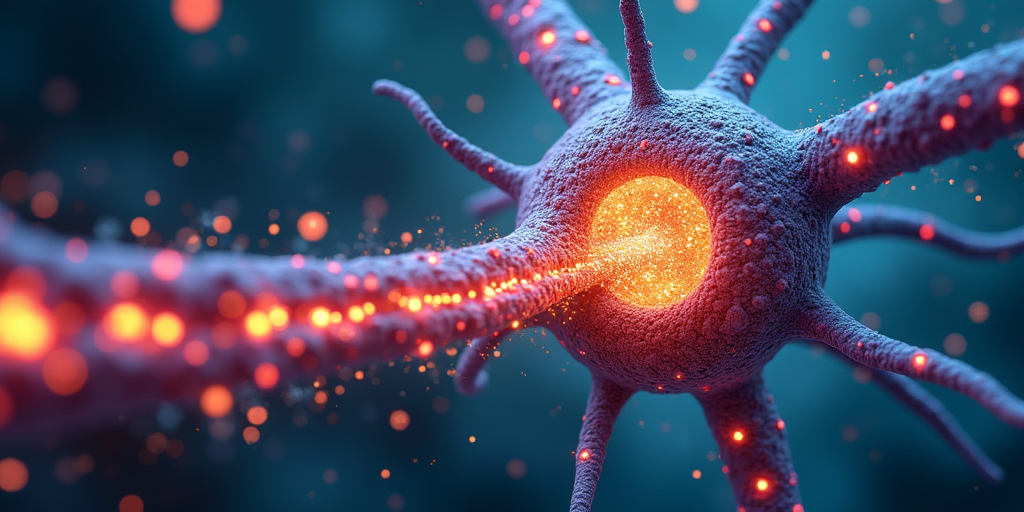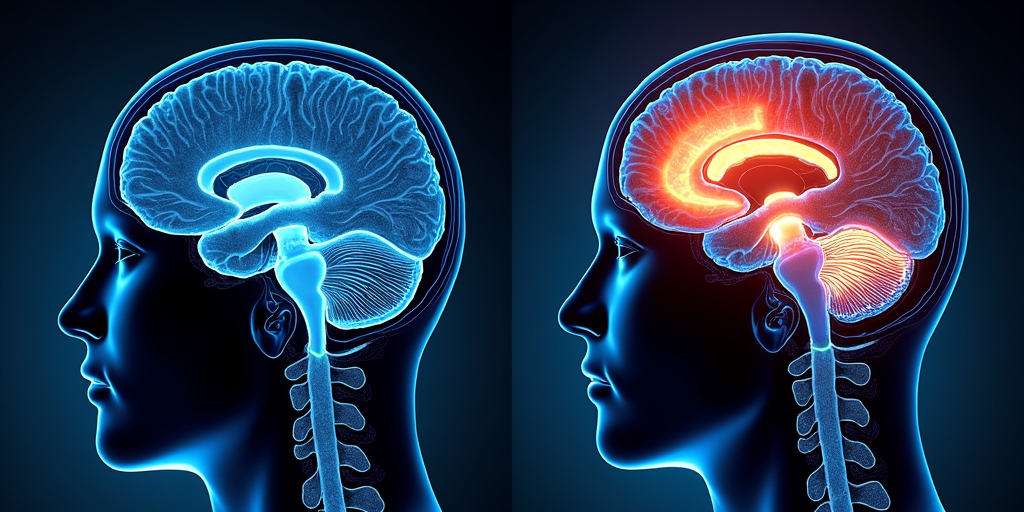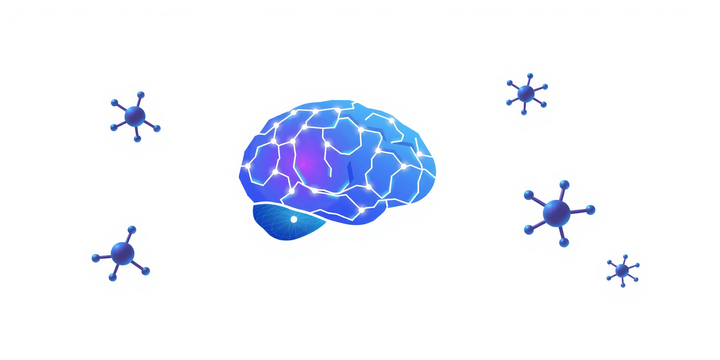Introduction to Nootropics: Understanding Cognitive Enhancers
Nootropics—from Greek 'mind-turning'—span ancient herbs to modern synthetics. They enhance cognition by modulating brain chemicals, improving blood flow, and supporting neural connections, offering cognitive benefits when used responsibly.

In today's fast-paced world, where cognitive demands continue to increase, many people are turning to substances that promise to enhance brain function. These substances, known as nootropics or "smart drugs," have gained significant popularity among students, professionals, and anyone looking to optimize their mental performance. This article provides a comprehensive introduction to nootropics, exploring their definition, history, mechanisms of action, types, and ethical considerations.
What Are Nootropics? Defining Cognitive Enhancers
The term "nootropic" (from the Greek "noos" meaning mind and "tropein" meaning to bend or turn) was coined by Romanian psychologist and chemist Dr. Corneliu Giurgea in 1972. According to Giurgea's original definition, a substance qualifies as a nootropic if it:
- Enhances learning and memory
- Protects the brain from physical or chemical injury
- Increases the efficacy of neuronal firing control mechanisms
- Possesses few or no side effects
- Has extremely low toxicity
Today, the term is used more broadly to describe any natural or synthetic substance that may improve cognitive function, particularly executive functions, memory, creativity, or motivation in healthy individuals. These substances range from pharmaceuticals developed for treating cognitive or motor function disorders to dietary supplements, herbs, and even everyday substances like caffeine.
A Brief History of Nootropics

The quest for cognitive enhancement is not new. Throughout history, humans have consumed various substances to improve mental performance:
- Ancient civilizations: Used herbs like Ginkgo biloba (China), Bacopa monnieri (India), and various adaptogens to enhance mental clarity and memory.
- 1960s: The first synthetic nootropic, Piracetam, was developed by Dr. Giurgea while working at UCB, a Belgian pharmaceutical company. Originally designed to help with motion sickness, researchers noticed it appeared to improve memory and cognitive function.
- 1970s-1980s: Research expanded on racetams and other synthetic compounds for treating cognitive disorders.
- 1990s-2000s: Growing interest in "cognitive enhancement" for healthy individuals emerged, along with increased scientific study of traditional herbs and new synthetic compounds.
- 2010s-Present: Explosion in popularity of nootropics in mainstream culture, development of "stacks" (combinations of different nootropics), and the emergence of nootropics companies marketing to healthy individuals seeking cognitive optimization.
How Cognitive Enhancers Work in the Brain

Nootropics influence brain function through various mechanisms, which can include:
Modulating Neurotransmitters
Many nootropics affect the brain's neurotransmitter systems—the chemical messengers that neurons use to communicate with each other. Common mechanisms include:
- Increasing acetylcholine: Compounds like Alpha-GPC, CDP-Choline, and racetams can enhance levels or function of acetylcholine, a neurotransmitter crucial for learning and memory.
- Affecting dopamine and norepinephrine: Substances like L-tyrosine can support the production of these neurotransmitters, which are important for focus, motivation, and mood.
- Influencing serotonin and GABA: Compounds such as L-theanine may affect these neurotransmitters that regulate mood and stress response.
Enhancing Cerebral Blood Flow

Some nootropics improve the delivery of oxygen and nutrients to the brain by:
- Dilating blood vessels (vasodilation)
- Reducing blood viscosity
- Improving red blood cell deformability, allowing better microcirculation
Examples include Ginkgo biloba, vinpocetine, and certain flavonoids.
Supporting Neuroplasticity
Neuroplasticity—the brain's ability to form new neural connections and adapt—is crucial for learning and memory. Certain nootropics support this process by:
- Increasing production of brain-derived neurotrophic factor (BDNF) and nerve growth factor (NGF)
- Supporting synapse formation
- Enhancing long-term potentiation (LTP), a process underlying memory formation
Lion's Mane mushroom, Bacopa monnieri, and some synthetic compounds have shown effects on these processes.
Providing Neuroprotection
Many substances classified as nootropics offer protective effects against oxidative stress, inflammation, and toxins through:
- Antioxidant properties
- Anti-inflammatory mechanisms
- Mitochondrial support
- Reduction of excitotoxicity
These neuroprotective effects may contribute to both short-term cognitive enhancement and long-term brain health.
Natural vs. Synthetic Nootropics: Understanding the Differences

Nootropics broadly fall into two categories—natural and synthetic—though the boundary can sometimes blur.
Natural Nootropics

Natural nootropics are derived from plants, fungi, and other natural sources. They include:
Herbal Nootropics:
- Bacopa monnieri: Used in Ayurvedic medicine for centuries, supports memory and reduces anxiety
- Ginkgo biloba: One of the oldest living tree species, known for improving blood flow to the brain
- Panax ginseng: An adaptogen that may improve mental performance and reduce mental fatigue
- Rhodiola rosea: An adaptogenic herb that helps combat fatigue and stress
Mushrooms:
- Lion's Mane (Hericium erinaceus): Promotes nerve growth factor production
- Cordyceps: May improve energy and oxygen utilization
- Reishi: Supports overall brain health and stress management
Food-Derived Compounds:
- L-theanine: Found in tea, promotes relaxed alertness
- Caffeine: The world's most widely consumed psychoactive substance
- Omega-3 fatty acids: Essential for brain structure and function
- Flavonoids: Plant compounds with antioxidant and anti-inflammatory properties
Synthetic Nootropics
Synthetic nootropics are laboratory-created compounds designed specifically for cognitive enhancement or to treat cognitive disorders:
Racetams:
- Piracetam: The original nootropic, may enhance memory and learning
- Aniracetam: More potent than piracetam, with additional anxiolytic effects
- Oxiracetam: Known for potential logical thinking and technical task benefits
- Pramiracetam: Highly potent with strong effects on memory formation
Peptides:
- Noopept: Structurally similar to racetams but much more potent, enhances memory and has neuroprotective properties
- Semax: Originally developed in Russia, supports memory and focus
Other Synthetics:
- Modafinil: Promotes wakefulness and alertness, prescribed for narcolepsy
- Phenylpiracetam: Combines the effects of piracetam with stimulant properties
- Sulbutiamine: A synthetic derivative of thiamine (Vitamin B1)
Key Differences
When comparing natural and synthetic options:
Research Depth:
- Many natural nootropics have longer historical use but sometimes less rigorous modern research
- Synthetic options often have more controlled studies but shorter history of human use
Potency and Specificity:
- Synthetic compounds typically offer more targeted, potent effects
- Natural options often provide milder effects but with broader mechanisms of action
Safety and Regulation:
- Natural substances generally have better understood long-term safety profiles
- Synthetic options may have more pronounced effects but also potentially more side effects
- Regulatory status varies widely across different compounds and countries
Ethical Considerations and Responsible Use

The growing popularity of nootropics raises important ethical questions and considerations:
Individual Ethics and Safety
Self-experimentation risks:
- Lack of long-term safety data for many compounds
- Variable quality of commercially available products
- Potential interactions with medications or health conditions
- Limited regulation in many countries
Responsible use guidelines:

- Start with thoroughly researched substances
- Begin with low doses and carefully monitor effects
- Keep detailed records of effects and side effects
- Consider cycling rather than continuous use
- Prioritize foundational health practices (sleep, nutrition, exercise)
- Consult healthcare providers, especially when using prescription nootropics
Societal and Philosophical Questions
Access and equality:
- Cognitive enhancement may exacerbate existing social inequalities if access is limited
- Economic barriers to higher-quality nootropics may create a "cognitive divide"
Authenticity and identity:
- Questions about whether enhanced cognition represents "authentic" achievement
- Considerations of how cognitive enhancement relates to personal identity
Coercion and pressure:
- Potential for implicit or explicit pressure to use cognitive enhancers in competitive environments
- Questions about genuine consent when social or professional pressures exist
Long-term societal implications:
- How widespread cognitive enhancement might change education, workplace expectations, and human potential
- Balancing individual freedom with societal welfare
Conclusion: The Future of Cognitive Enhancement
Nootropics represent a fascinating frontier in our understanding of human cognitive potential. As research advances, we will likely gain better insights into both the benefits and limitations of various cognitive enhancers.
For those interested in exploring nootropics, the most prudent approach combines curiosity with caution. Start with well-established substances, thoroughly research any compound before trying it, begin with conservative dosages, and pay careful attention to both objective and subjective effects.
Remember that nootropics are just one aspect of cognitive optimization. The most effective approach to enhancing brain function integrates quality sleep, regular physical exercise, stress management, proper nutrition, and mental challenge—with nootropics potentially serving as supplements to these foundational practices, not replacements for them.
The quest to enhance our cognitive capabilities is fundamentally human. With responsible use and ongoing research, nootropics may offer valuable tools for supporting brain health and cognitive performance in our increasingly complex world.
